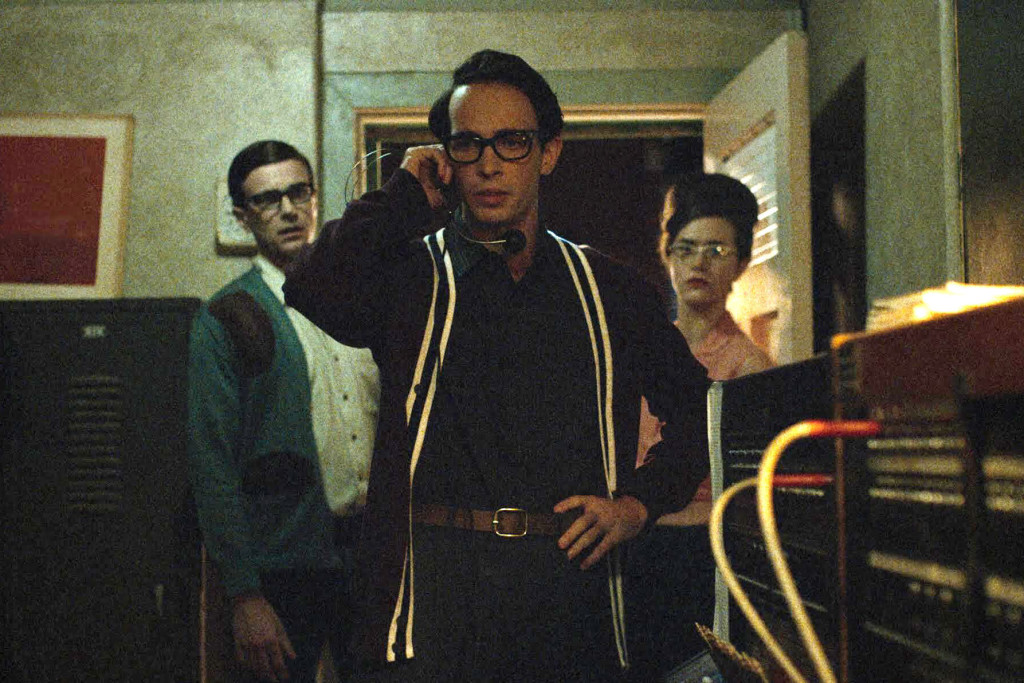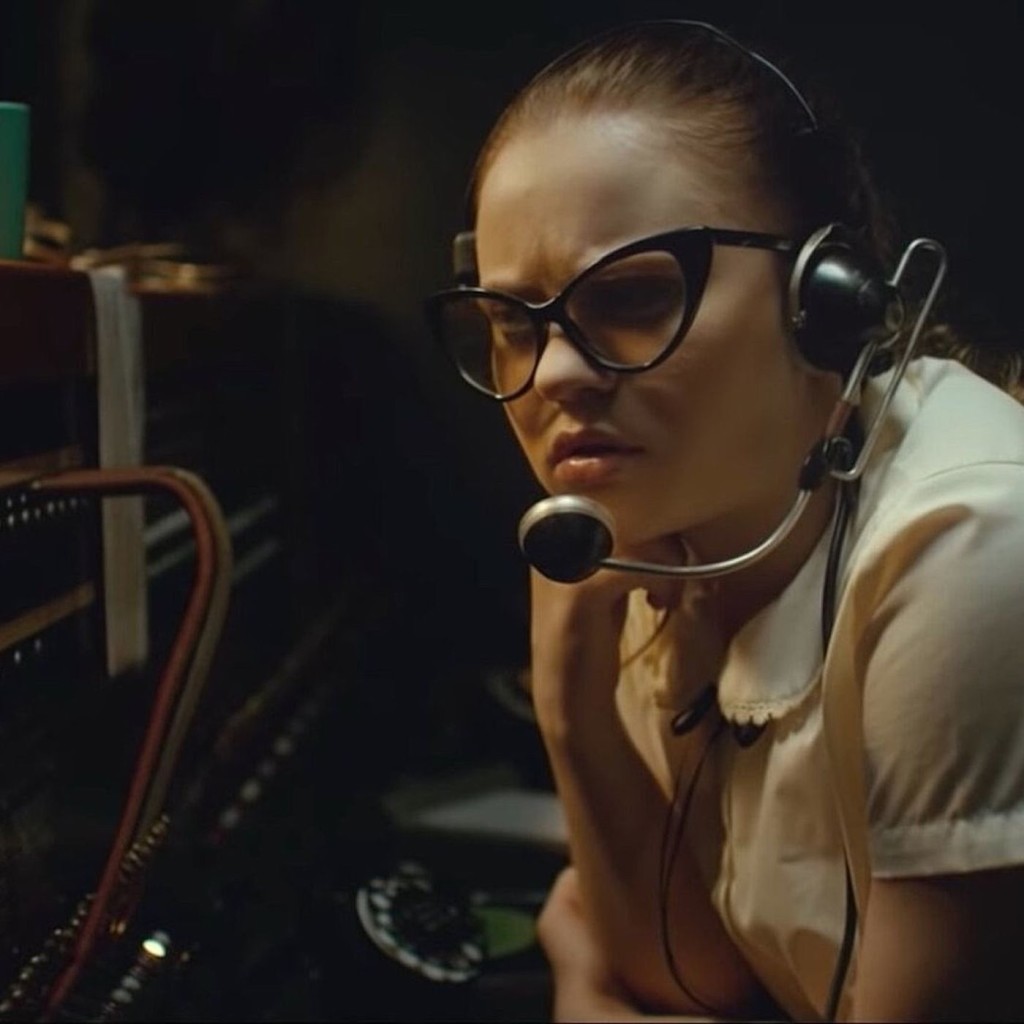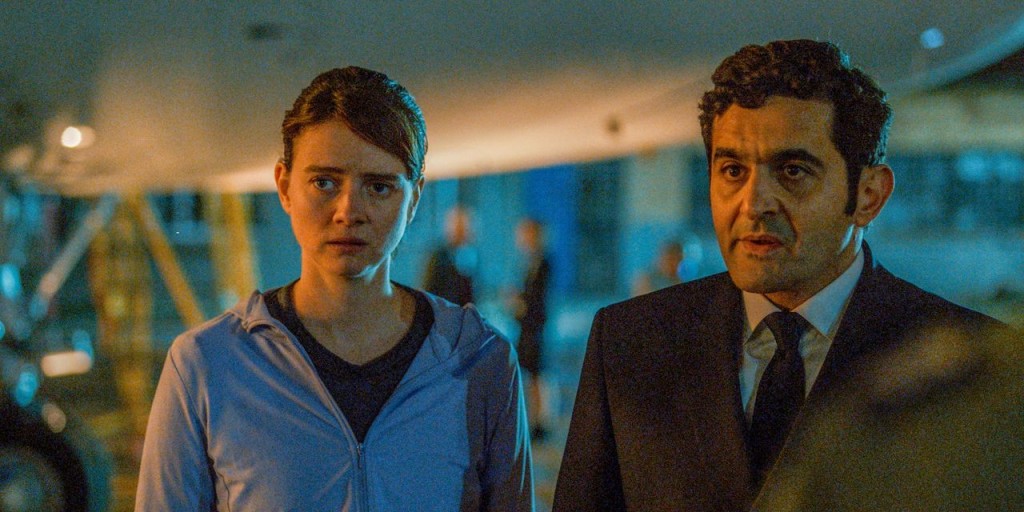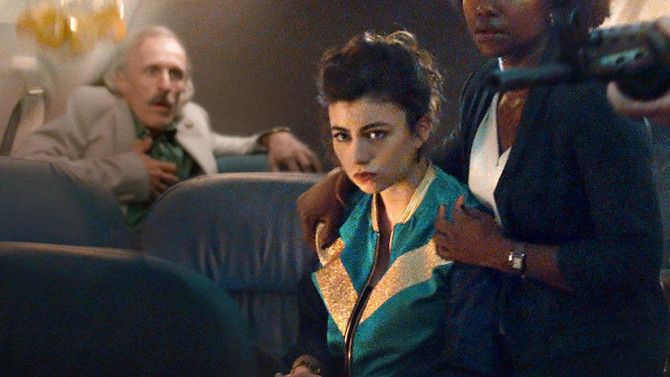Today I finally FINALLY settle the debate of whether the famous Protosevich draft of I Am Legend is an abandoned classic
Genre: Horror/Action
Premise: In post-apocalyptic San Francisco, a man tries to survive with his dog while avoiding a new race of blood-drinking people.
About: I am Legend is a classic book. It was one of the longest running properties in Development Hell until Will Smith came along and finally turned the project into a go movie. It is widely believed that they went with a lame draft and ditched one of the best drafts of a script EVER. Which is why I wanted to read the draft they passed up. I wanted to find out if that was true.
Writer: Mark Protosevich (based on the classic novel by Richard Matheson
Details: No page numbers
Last week I reviewed a script called Cover Version, which is the script that would eventually become Yesterday. A discussion had begun brewing online about whether Richard Curtis ruined Yesterday and that the original script was much better. I read Cover Version and disagreed.
I said that, in my experience, the script that makes it to screen is the best version of the script 99% of the time. The idea that that all these movies (The Snyder Cut! The Ayer Cut!) have some masterful unamade better version somewhere back at the studio lot may sound romantic. But it’s never true. Often, the movies are just different iterations of the same material.
But this is the script they say is the exception to that rule. The Protosevich draft. It was way better than what they went with. Today I offer you another episode of, “WAS THAT OLD DRAFT REALLY BETTER THAN THE MOVIE?!”
Robert Nelville lives in the aftermath of a pandemic that nearly wiped out the entire human population. He lives amongst these things called hemocytes. These are half-vampire half-zombie things that are intelligent and want nothing more than to kill Nelville, especially their leader, Cortman, a guy who likes to wax poetic every night outside of Nelville’s heavily fortified home.
Robert spends his days foraging for food with his dog. Luckily, the hemocytes can’t survive in sunlight. So, during the day, he’s fine. But if there ever comes a time when he gets stuck out here at night, he’s screwed.
Robert’s goal is mostly to survive. But one day when he *does* get stuck in the darkness, that goal is looking unlikely. Nelville and his dog wipe out a band of hemocytes but both of our heroes end up injured. Nelville tries to save his dog but fails. Bye bye doggy.
About to give up on life, Robert finds a note in the city center from another uninfected human. He shows up to meet Anna. Soon, she moves in and the two are having sexy time. But Anna is a trojan horse working for the hemocytes! She’s able to get Nelville out and bring him back to Cortman, who drags Nelville back to his underground subway city. He’s been waiting a long time for the opportunity to kill Nelville. And now he’s going to enjoy it!
It’s been a while since I saw the movie but here’s what I remember. I remember a cool opening image of Will Smith hunting in a post-apocalyptic New York. I remember a somewhat logical storyline where he was a doctor trying to find a cure to this disease. I remember the zombies being too CG and taking me out of the movie. The moment I remember checking out was when the woman showed up. I don’t even remember why she was there or what she wanted. Probably because it was dumb.
So is the script better than that?
I mean, the bar sounds pretty low.
Hmm… I dunno.
A couple of differences I noticed right away.
The hemoctye Nelville first encounters in this draft is both clever and can speak. That made for a completely different experience than the mindless zombie bomb we got. And the second was the level of detail in the zombie hierarchy. There are a lot more layers to this foe than in the film. It feels more unique. We’ve seen plenty of mindless zombie movies already. This smart half-zombie hierarchy is what would’ve made this zombie movie different.
But after that, the drafts read surprisingly similar.
This is exactly what I was saying. They’re slightly different movies but it’d be a stretch to say this early draft is hands down better.
I liked Nelville better in the movie to be honest – how they made him a doctor (he’s a history professor in the script). That allowed him to be more active. And he also had more influence on the story. If he figures out the cure, he can save an entire race. This would’ve fixed the problem in this draft, which is that all Nelville is trying to do is survive until the next day.
Another difference was the zombie-vampires themselves. In this draft, they’re smart. They can hold a perfect conversation with you. I went back and forth on if this was a better idea or not. On the one hand, a killer species that’s just bottled up rage with no brains is terrifying. There’s no talking one of these guys out of killing you.
But in the script, you get the sense that these guys are rational. Blood thirsty and crazy. But Cortman could be reasoned with. Which is scarier? The movie version, for sure. However, by giving them personalities, the script made them more complex and interesting. That theoretically created a richer set of characters. But I’m not sure it achieved that in practice.
Like the movie, the script loses something when Anna shows up. Look, bringing a new character into a story at the midpoint is a smart idea. It creates a whole new set of scenarios that were unavailable in the first half of the script, which allows the second half of the script to feel different.
But in both situations, I never warmed to Anna. There was always something “plot-pointy” about her character. She was never a real person. She was a way to give the second half of the movie purpose and build to some sort of clear focused ending. If you ever catch yourself using your characters as plot pawns instead of really getting to know them and exploring them, check yourself before you wreck yourself.
I hate to break it to everyone but, once again, it is NOT true that some great script went unshot for some bastardized Hollywood version. This draft is merely different. And it’s not even that different. A lot of the key beats from the movie are in here as well. If you want to know what killed I Am Legend, look at the casting of Will Smith and whoever decided the hemocytes should look overly computer generated.
[ ] What the hell did I just read?
[ ] wasn’t for me
[x] worth the read
[ ] impressive
[ ] genius
What I learned: The city you pick for your story matters. Each city has a unique personality that, if you do it right, should ooze into the story. Los Angeles is laid back. San Francisco super liberal. Chicago is a working class town. The ONLY thing that New York brings to the table is familiarity. That’s the only reason to set your movie in New York. Otherwise, you’re just the 500,000th movie that has set itself in New York City, ensuring your movie will feel derivative. They should’ve kept San Francisco, like we see here in this draft.
Genre: Drama/Comedy
Premise: Two weed growers who have been dating for over a decade have their relationship upended when one of them wins a reality TV show contest to fly to Mars.
About: This script finished on last year’s Black List with six votes. It’s an adaptation of a short story from Deborah Willis in her book, “The Dark and Other Love Stories.”
Writer: Kaitlin Fontana (from a story by Deborah Willis)
Details: 115 pages
Someone told me not long ago that Mars movies were dead.
To them I say, WRONG-O!
And CHECK URSELF B4 U WRK URSELF!
One of the first lessons I learned about Hollywood is that something is only dead until it isn’t. A year after I was told that Hollywood would never make a pirate movie again, Pirates of the Caribbean came out. So I learned to distrust Hollywood rhetoric early on.
As long as you have a good idea, you can make any “dead” genre work. But that’s the key. It has to be a good idea.
Today’s idea is… funky. Different. I like the title! That’s what made me open the script. But does the script live up to that title? Let’s find out.
Kevin and Amber have been dating for twelve years. Both of them lack purpose. They start growing weed in their basement so that they never have to do anything with their life. But then Amber goes off and applies for a reality show that ends with two people going to Mars.
Kevin watches helplessly as the newly purposeful Amber flies to the reality show location to start her training. While this is happening, we jump back to earlier points in Kevin and Amber’s relationship to show how they met. I would say “how they met and fell in love” but this relationship is more a relationship of convenience.
The script also turns Kevin into a somber version of Ferris Bueller who will talk straight to us, the viewer, about why this situation sucks so badly. Well, Kevin, it’s about to get worse. Every Thursday Kevin watches his girlfriend on the reality show as she becomes closer and closer to another contestant, the handsome and cool, Adam.
Eventually, Amber and Adam are sent up on a space capsule for six months to simulate the trip to Mars. See if they can handle each other for that long. The answer comes to us in a stunning visual. When the two exit the capsule, Amber’s pregnant!
But don’t worry. Kevin starts screwing around with some druggie chick named Tanya who not only comes around to smoke weed all the time, but happily watches the reality show with Kevin’s girlfriend in it. Alas, Kevin gets bored of Tanya and dumps her. Will Kevin ever find happiness? And will Amber and Adam be heading to the real Mars? Check out Girlfriend on Mars to find out!
I’m going to isolate this script’s problems down to a single issue.
A depressed inactive aimless main character is too much for a script to overcome. It’s hard enough to get an audience to root for a depressing character. But then when you add in that he doesn’t do anything but sit on the couch all day and watch his ex-girlfriend’s reality TV show, that’s something no screenplay can make work.
On top of that, you have two storylines. One where a girl is training to go to Mars and the other where a guy sits on the couch all day. Which one of those storylines sounds more interesting? I’m hoping you said the first one. But we don’t spend any time with Amber. We instead stay back at the house, on the couch, with Kevin.
You have to look at this logically.
You’re trying to make a movie.
So you have to imagine what your movie is going to look like onscreen. If 80% of your movie is a guy on a couch, how is that going to look onscreen? I’d imagine it would look pretty un-cinematic.
So either focus on the part of your movie that IS cinematic or repurpose the story you want to tell (in this case, Kevin’s) so that it’s MORE cinematic. And that goes right back to our main character. The simple adjustment of making Kevin more active means he’s going to be out there in more situations encountering obstacles and trying to overcome them, which is cinematic.
Now you may say, well Carson, the whole point of his character is that he’s the opposite of his girlfriend. He’s depressed. He has no motivation. That’s his character’s flaw! And what I would say to you then is, okay, so is it a good idea to write a movie about that character?
This is why I always say, one of the best things you can do when you’re putting your story together is to figure out how your character is going to be active.
The only time I’ve found that lazy inactive characters work is when they’re FORCED to be active and when it’s a comedy. Two classic stoner comedies, The Big Lebowski, and Pineapple Express, take stoner passive characters then thrust them into their worst nightmare. THEY MUST BE ACTIVE. That’s why those movies are so fun. Lebowski would not be a classic character and Pineapple Express would not be a beloved comedy if those characters were able to chill out doing nothing but smoking pot the whole movie.
This leads to a bigger question, which is, is there a movie here?
I think there is if you go the full comedy route. And you’d need to figure out a way to keep Kevin and Amber around each other. He would need to go to wherever she was training so they’d still be spending time together.
Because by making her so far away, you dilute the importance of their relationship. You want characters who are having problems with each other to be around each other. That’s when they’re the most interesting to watch. Cause we want to see if they’re going to resolve those issues or not.
It’s hard to feel any emotion with the two on the phone or Kevin watching her on TV. It all feels so far away and unimportant.
But, yeah, this needs to be a full-blown comedy. I mean, the title is, “Girlfriend on Mars.” That’s a title that elicits a laugh. You need a funny script to accompany it.
In the writer’s defense, this is a first draft of a book adaptation and those first drafts tend to follow the book narrative too closely. Books and movies are soooooo different. The storyline of a movie needs to be tighter, it needs a focused hook, and it needs to be simpler. This isn’t the kind of movie you want to burden with a bunch of jumping around in time. It just isn’t that kind of story.
I hope they figure it out.
[ ] What the hell did I just read?
[x] wasn’t for me
[ ] worth the read
[ ] impressive
[ ] genius
What I learned: Novels tend to be more introspective. Movies are more in your face. That’s why adapting a novel or a short story can be tough. But that’s the skill you need to bring to the table as a writer. You must figure out a way to take something that’s largely in a character’s head and make it active and cinematic. Sometimes that means drastically changing the story. But you gotta do what you gotta do! Don’t be a slave to the original material if it’s going to make a lousy movie.
What I learned: If there’s a problem facing your hero, you should write the movie so that they have the opportunity to tackle that problem. One of the reasons Girlfriend on Mars is so frustrating is because Kevin has this huge problem – his girlfriend is training to go to Mars and she’s falling in love with her co-pilot – and all he can do is watch. If there isn’t even an option for your hero to solve the problem, there’s going to be very little drama in your movie. This is why I said it would’ve been a good idea to get Kevin and Amber around each other. Now he has a shot at disrupting this.
Today’s movie is a prime example of the power of a small group of people working together to create art.
Genre: Sci-Fi
Premise: Set in the 1950s, a DJ and a switchboard operator living in a small town hear a strange noise coming over the airwaves and spend the night trying to decipher what the noise is and where it’s coming from.
About: The Vast of Night was a tiny film created by a small group of passionate people which would eventually get accepted into Slamdance and become one of the breakout films at the festival. Amazon would purchase it and when the movie debuted this weekend, it held a surprising 93% Rotten Tomato score, a virtually unheard of achievement for a film made by and starring people who have zero footprint in the movie business. This is director Andrew Patterson’s first film. It is writers James Montague and Craig Sanger’s first film. You’ve never seen the two leads before. So what was it about the movie that got people so revved up? Let’s find out!
Writers: James Montague and Craig W. Sanger
Details: 90 minutes
I’m all about the UFOs. Aliens visiting this planet is my jam. But it’s well-traveled Hollywood real estate and therefore you have to come with a fresh angle to stand out. The Vast of Night is one of the few movies in this genre to actually achieve this.
The story takes place in Small Town, USA during the evening of a big high school basketball game. We meet Everett Sloan, our DJ helping people at the gym set up for the game. Everett’s trying out his new audio tape recorder and having a blast interviewing people about the game.
Everett runs into Fay Crocker, a geeky female switchboard operator with a penchant for science who begins rattling off some of the crazy predictions she’s read about the future in her Popular Mechanics magazine collection. We follow the two around the school and into the quiet small town until they eventually split up to do their jobs, him to DJ and her to work the switchboard.
The Vast of Night then places us in a single profile shot watching Fay do her job for FIFTEEN FULL MINUTES. During the tail end of this session, she hears a strange noise and calls Everett to patch him in to see if he knows what it is. Everett doesn’t but wants to play it on the air to see if anybody else knows.
This leads to an older army veteran, Billy, calling in, who says he has a story to share and goes on about how he, too, heard that noise when he was deployed. After Billy’s call, an older woman, Mabel, calls in and says she needs Everett to come to her house so she can tell him something important about the noise. Everett grabs his tape recorder and Fay and they head over there. Mabel says that her own daughter was taken by aliens responsible for that noise.
Figuring that the aliens must be nearby and will probably leave once the basketball game is over, Everett and Fay grab a car and drive into the vast of night to try and locate the alien ship. They eventually do. But when the alien ship spots them, will it allow them to go back to town? Or will it make sure the story ends here?
I give the writers credit for keeping the narrative tight. That’s a little screenwriting trick you can use with plots that don’t have a lot of sex appeal. The nature of limiting the timeline to 2 hours or 3 hours or 4 hours, gives the story a false sense of urgency that tricks the viewer into feeling like the plot is moving along faster than it is.
But the real star here is the directing.
These guys had no money yet they found a way to make this feel like a movie. By the way, that’s one of the primary things producers and studios look for in directors. They’re looking for people who can make a 1 million dollar movie look like a 5 million dollar movie. Heck, Robert Rodriquez built an entire brand on that.
But back to Vast. The first thing they did was set the story in 1953 which added some production value you don’t get from your run-of-the-mill UFOs-in-the-sky movie. And they set it at night because the director couldn’t hide the telltale signs of this not being a 1950s town in the day. So that was a smart move.
He then told the story in a series of long single shots. Which is really hard to do. Especially when you have inexperienced actors. These actors are being asked to remember 10 pages of dialogue while doing complex walking one-take shots. Which is exactly why you don’t usually see that. Other directors (I’m talking indie directors, not Sam Mendes with 100 million dollars to play with) are too scared to try it. If you ruin one of those shots, you’re setting up for another 3 hours to get the next one. And there’s only so many of those takes that you get on a tiny budget like this. Yet that was the risk the director took in order to make sure his movie felt different from everyone else’s.
The director, Patterson, would also mix in these insane dolly shots. There’s one shot in the middle of the movie that pulls out of Everett’s DJ station and zooms along the ground, like a skateboarding possum on meth, through the entire town, going into the school, all in a single shot, mind you, then INTO THE BASKETBALL GAME ITSELF as its going on, goes onto the court while the game is playing, then swishes back out of the school and over to Fay in her switchboard room.
You just don’t see that in your average indie. It’s ambitious.
But the directing can’t outrun the writing issues in Vast. The primary issue is a lack of stakes. What Vast of Night attempts to do is use IMPLIED STAKES. Implied stakes are when you vaguely imply that good things might happen if the hero succeeds or bad things might happen if the hero fails.
Implied stakes don’t work well. You need CLEAR STAKES. Clear stakes are, “You better get the money by 6pm or we’re going to kill you.” Implied stakes are, “You better get the money or else.” Vast of Night is an implied stakes screenplay. We’re not sure why figuring out this sound matters other than it’s going to quench Everett and Fay’s curiosity. Is quenching curiosity “stakes?” Not where I come from.
And then you have an inevitable ending, which is unfortunate. There are so many risks in the direction and the ending is something we figure out two minutes after the strange noise appears. I mean, what else can you do really? You’re building up to this UFO. Obviously you’re going to show it. (spoilers) And since you need to add some extra pop, you’re probably going to have your leads beamed up to the ship. And that’s exactly what happens.
On the plus side, the dialogue is occasionally fun. I enjoyed Fay’s fascination with the future in the opening walk. And Billy’s call-in to the station was a highlight. The best performance of the movie comes from a character who never appears on screen. And while it’s easy to focus on his performance, Montague and Sanger gave him some juicy dialogue to work with.
In the end, this is a case of young fresh talent making a movie. There were always going to be missteps. But the pros overwhelm the cons when it’s all said and done. The Vast of Night is worth checking out.
[ ] What the hell did I just stream?
[ ] wasn’t for me
[x] worth the stream
[ ] impressive
[ ] genius
What I learned: Today’s what I learned is on you guys. I watched Space Force this weekend, which was awful. But I couldn’t figure out why it was awful. It’s not a bad idea. When I think Steve Carrel and Space Force, I imagine funny stuff. And I love 75% of the cast. Yet nothing in the show works. And it’s hard to figure out why other than to say it’s just not funny. So for those of you who saw it, educate me. What can I learn from Space Force on how not to write a comedy TV show?
Due to the corona-virus craziness, the Scriptshadow segue to producing has been pushed back a few months. And guess who benefits from that? YOU GUYS. I’m extending The Last Great Screenplay Contest deadline to July 4th. That’s right. INDEPENDENCE DAY. Think of it this way. On that day, your screenplay will finally achieve independence from you. Of course, it will now depend on me. But that’s another story.
NEW CONTEST DEADLINE: SATURDAY, JULY 4TH, 11:59 PM PACIFIC TIME
If you don’t know anything about The Last Great Screenplay Contest or how to enter, go here!
As for this weekend, I’m hearing good things about this new sci-fi movie debuting on Amazon Prime called, “The Vast of the Night.” So I’m going to check that out. Also, the long-awaited Steve Carrel show, “Space Force,” debuts on Netflix at midnight. So I’ll at least check out the first episode of that this weekend. Expect me to review one of the two Monday.
Hope everyone has a great weekend. Get some writing done!
So I finished Netflix’s Into the Night and I can honestly say it’s the best TV show of the year so far.
I haven’t encountered a show with this level of urgency in a long time. The closest I can think of is Netflix’s Black Summer. But what makes Into the Night so much better is that the urgency is organically built into the premise. They have to keep flying to avoid daylight.
There are three screenwriting tips I want to bring up in particular with this show. It should go without saying that I’m including spoilers. Watch the show first if possible. I guarantee that once you start, you won’t be able to stop.
Oh, and fun little piece of trivia. This show is based on a book. And the creator adapted the entire first season from the FIRST PAGE of the book.
The first concept I want to talk about is called sandwiching.
There comes multiple times in every TV or Feature script (but TV especially) where you’ve got to write a scene with boring exposition or two characters who don’t have a lot going on. This could be the C-story in a TV episode. You’ve been told you have to write the scene and there’s nothing interesting going on between the two characters.
In these situations, you want to SANDWICH the scene with something really big before and PROMISE something big is going to happen after. If you do this well, we’ll tolerate the scene.
So there’s this moment in episode 5 of Into the Night where Sylvie, our helicopter pilot protagonist, goes back to the apartment of her dead boyfriend and mourns. Another character shows up to try and convince her to come back.
Now before this scene, we just showed a major fight between two characters in another location where one character beats the other one to near death. He then leaves that character to get back to the plane. That’s the first piece of bread on this sandwich.
The second piece is we have to leave within an hour! That’s when the sun comes up. So we have to get back to the freaking airplane NOW! This is our exciting second piece of bread which is a PROMISE that something interesting is coming. And it’s for that reason we tolerate this slow decent-but-mostly-boring scene of Sylvie trying to get over her dead boyfriend.
Where writers get into trouble is when they get lazy, when they stop sandwiching boring scenes, when they try to pile 3 or 4 boring scenes inside a sandwich, or when they don’t understand the technique at all. Because that’s when you’re at risk of writing 20-30 pages of boring story.
In an ideal world, every scene would be riveting. But it’s just not possible. You need to set certain things up for later scenarios to be exciting. And setup can be boring.
Moving on, tip 2. Dialogue doesn’t matter as much as you think it does. Into the Night is one of the most riveting TV shows I’ve ever seen. But it’s in another language. And I don’t understand that language.
Therefore, I have to use subtitles. Now, for those who don’t know about the job of subtitling, these people do not directly translate what the characters are saying. Instead, they give the bare bones generalized idea of what they’re saying in its most basic form.
If you want to have some fun, turn on the dubbed English audio and also put on English subtitles. You’ll see that their dubbed words don’t even match the subtitles. That’s because two different people are doing those jobs and they’re both just putting up their generic interpretation of what’s being said.
I bring this up because everybody talks about the importance of dialogue when shows like Into the Night and movies like Parasite are amazing yet we’re basically watching them with 3rd grade level English dialogue translation.
Does this mean you shouldn’t strive to write great dialogue? Of course not. But it’s a reminder that it’s what’s SURROUNDING the dialogue that’s most important. If you get that right, a scene will work regardless of how basic the dialogue is. Shows like Into the Night prove that.
Add conflict. Add tension. Add dramatic irony. Come up with an interesting scenario, like 7 passengers questioning an 8th passenger on if he’s really who he says he is.
From there, do the best you can with your dialogue. But it’s setting up the situation surrounding the dialogue that matters most.
Finally, one of the writing devices I like the best is when the writer makes it seem TRULY IMPOSSIBLE that the characters are going to succeed in the end.
And I stress “truly” for a reason. Because most writers set up an ending where they’re already thinking of how they’re going to get the characters around the obstacles in their way, and therefore, it doesn’t TRULY feel impossible. We can sense the writer carving that escape hatch that the characters are going to find and be okay.
Instead, you want to write your ending almost like you hate yourself. You want to make it as hard as possible for you the writer to figure out how your characters are going to get out of this.
Into the Night aces this test and then some.
(Major Spoilers)
While on their final flight – they’re not going to have fuel after this – the group has located an old Soviet bunker in Bulgaria that government officials are fleeing to. So their plan is to land the plane at the Bulgarian airport and haul ass to the bunker.
Now get this.
There’s no guarantee they’re going to get inside. It might be locked. It might be full. So right from the start, it’s bad news.
Next, they don’t know exactly where the bunker is. They’re working with some janky old map.
When they land, they have half an hour until sunrise. So they have to find a mystery bunker that they only vaguely know the location of in a country they’ve never been to before, driving on roads that are completely foreign to them, and then hope they get inside when they get there.
Only one person can carry the map but there are 9 people so they have to split up into two jeeps. So the first jeep is speeding away. The second jeep has to try and keep up with them on these winding roads. If they lose them, there’s no way to know which way to go.
Three quarters of the way there, the second jeep crashes. So they have to walk the rest of the way. Meanwhile, the first jeep crosses a gate that automatically closes behind them, locking the second group out.
The second group eventually gets to the gate but it’s electric, so they can’t even climb over it. There’s only 12 minutes left before the sun rises, by the way. They don’t even know if they’re close to the bunker or not. Also, nobody knows where the bunker entrance is. It’s not like a McDonald’s with Golden Arches signaling the location. It’s metal doors built into a hill.
I was sitting there watching this both in awe of the show, in how well it was crafted, and in awe of the writer, who so boldly made things difficult for himself.
Because it would’ve been easy to throw one mildly difficult obstacle at the characters. To throw THIS many obstacles requires a lot more work. Because now you’re stopping the characters more. You’re having to come up with solutions to these problems you’ve created. And bad writers don’t want to do that. It takes way longer to write the obstacle overcoming scenes and requires a lot more brainpower.
So I was rooting for both the characters and the writers simultaneously with this ending because I couldn’t have asked for a better end to this season.
Those are my Into the Night tips. Take them with you, into the night, and use them on your next screenplay!










